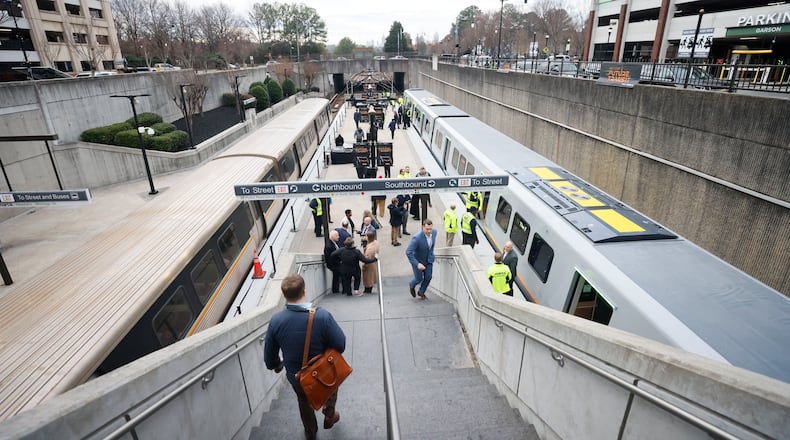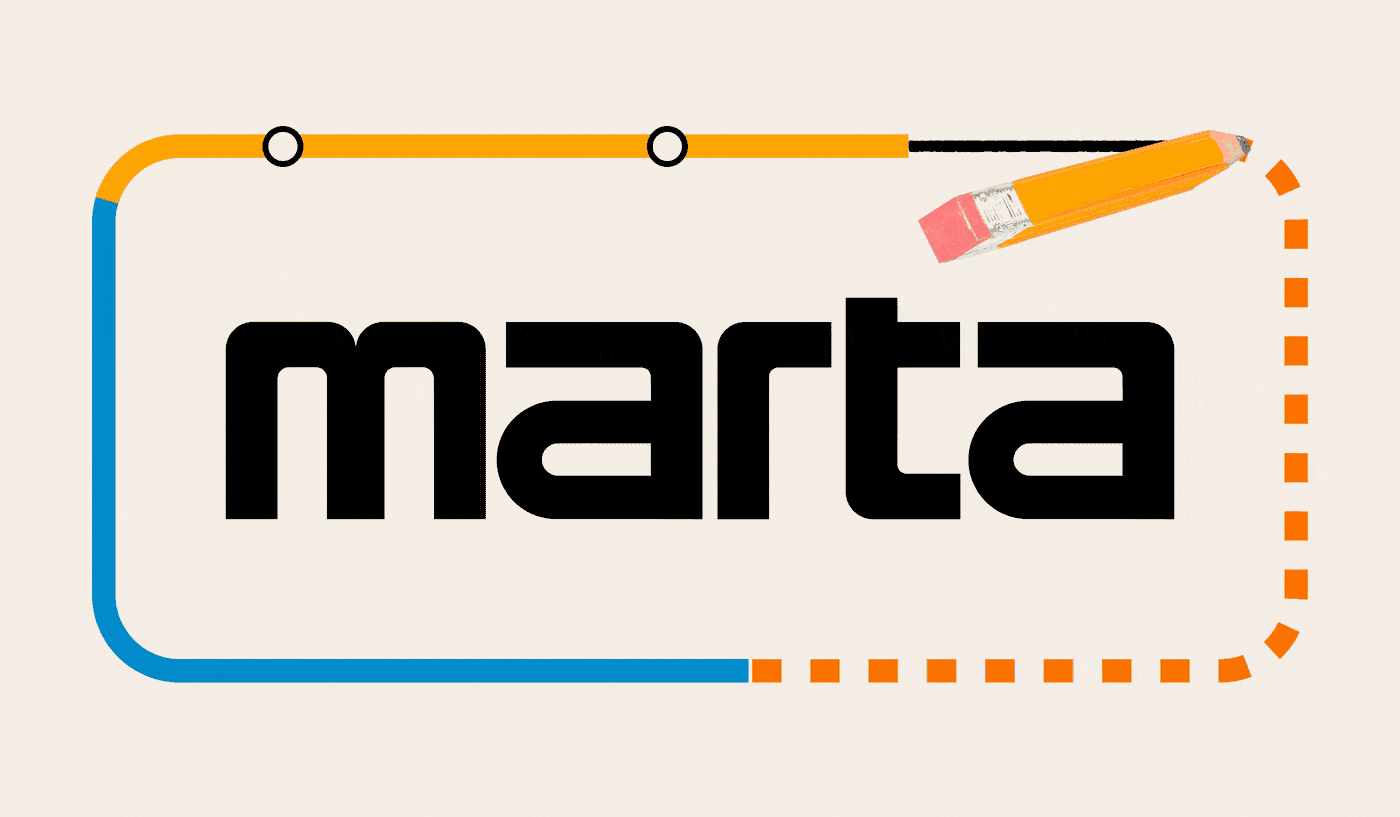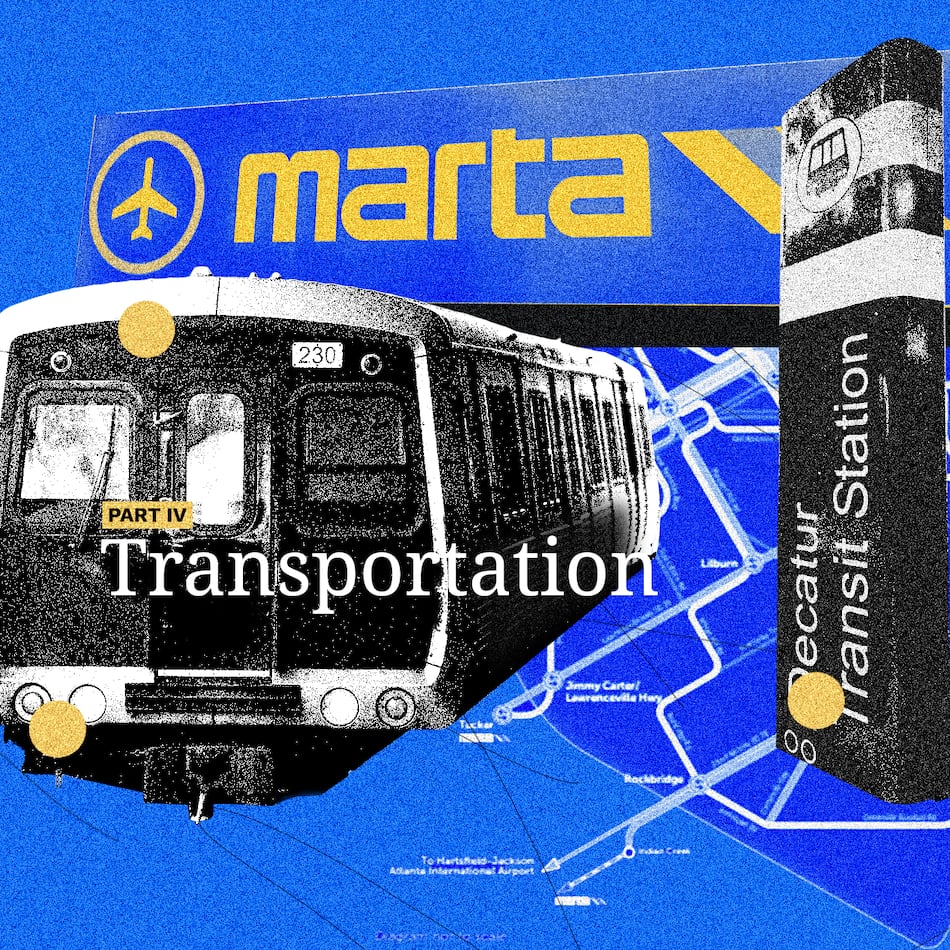While MARTA officials hope a new “north star” focus on cleanliness, safety and reliability will get more people on trains and buses, next year’s budget conservatively plans for ridership to stay the same.
At the same time, MARTA’s new budget proposal suggests cutting costs to account for declining revenue.
Officials said the cuts they’ve proposed, about $2.5 million, were identified strategically and won’t impede progress on the focus areas.
“The forecast is conservative, but everything we’re doing is with the intent to grow ridership,” MARTA General Manager and CEO Collie Greenwood said in an interview after a budget briefing for MARTA board members on Friday.
The $652 million proposed operating budget primarily cuts costs by reducing the number of positions, many of which are currently vacant. It would also implement a soft hiring freeze for some administrative jobs.
Ridership has been an ongoing struggle for MARTA since the pandemic disrupted travel patterns, and MARTA has struggled to get riders back in seats more than almost every other U.S. transit agency.
From 2019 to 2024, MARTA’s total ridership fell 43%, according to federal data. While total ridership has grown every year since 2020, the growth has been uneven, particularly with regard to rail. After two years of increasing ridership, MARTA lost rail riders in 2024.
MARTA has said previously it believes the recently observed decrease in rail ridership is not real, but rather a consequence of fare evasion and broken fare gates that aren’t counting paying customers. It’s been an issue since fall 2023, officials said.
New fare gates being installed in 2026 are expected to correct the data-counting issue. But MARTA officials said Friday the installation could lead to a temporary loss of fare revenue — as much as $7 million, Deputy Chief Financial Officer Greg Patterson said in an interview. While the gates are being installed, MARTA won’t always be able to collect fares.
That’s part of why the proposed budget anticipates a drop in passenger fare revenue from $82 million to $68.4 million. The rest of the projected decrease comes from adjusting ridership projections.
Through the third quarter, fare revenue was trending 11% lower than forecast. The proposed budget takes a more conservative approach that assumes current ridership levels continue, Patterson said.
The $7 million in lost revenue is also a conservative estimate, he said. MARTA is exploring temporary ways of collecting fares while the gate installation is in progress, Chief Capital Officer Carrie Rocha told the board. The challenge is making sure a solution doesn’t cost more than the lost revenue, she said.
“At some point, the cost of doing this is what we would project to lose or more,” Rocha said.
The proposed budget does not call for a fare increase, and one isn’t currently being contemplated, but several board members said it’s something MARTA should study down the road.
MARTA’s fare has been $2.50 since 2011, when it was raised from $2.
“It’s a long time for what we’re charging people to use our system being flat when expenses are going up like crazy,” board member Jim Durrett said.
Greenwood said the fares are far less than the actual cost of a ride — each rail or bus ride runs MARTA between $11 and $12. Rides through MARTA’s mobility service for people with disabilities that prevent them from accessing traditional transit cost $87.
The proposed budget looks through 2030, and deficits are forecast beginning in July 2026, despite projecting a combination of sales tax and passenger revenue increases. The increased revenue won’t keep pace with expected costs of running the system, Patterson said.
Board members also suggested MARTA explore charging fares based on distance or time of day traveled, something common in other transit systems.
Board member Elizabeth Bolton-Harris said MARTA needs to meet the cleanliness, safety and reliability goals first before contemplating a fare increase.
“Right now, I could imagine a riot would occur,” she said.
Other board members encouraged MARTA to explore revenue sources beyond fares, like leasing and advertisement income. They also encouraged MARTA to more aggressively pursue transit-oriented development deals.
MARTA’s “north star” focus on cleanliness, safety and reliability is new this year. It comes about a month after a former Atlanta Department of Transportation deputy commissioner, Doug Nagy, proposed it in a turnaround strategy memo given to the board.
Nagy said Friday he doesn’t think MARTA has set clear goals. Increasing ridership needs to be a goal, not just whether stations are cleaner, he said.
“When you don’t measure real results, it’s easy to claim success,” he said.
The board briefing is the first step in the budget approval process. Copies of the budget were distributed to the board this week and will be made available to the public on Monday at itsmarta.com.
The board will hold two public budget hearings, both next week. The first is at 6 p.m. Tuesday at MARTA’s headquarters, 2424 Piedmont Road NE. The second is at 6 p.m. Thursday at the Riverdale Town Center, 7210 Church St.
Public comments can also be submitted via voice message at 404-848-5299 or by email at publichearinginfo@itsmarta.com.
Board member Shayna Pollock, one of the newer members of the board, suggested the board livestream its budget briefing in the future to make the process more transparent. The board met off-site for the meeting, which, unlike most meetings, was not livestreamed.
It was advertised publicly after The Atlanta Journal-Constitution asked.
Pollock said the discussion about what MARTA is doing to improve the rider experience would be good for the public to hear.
“Frankly, it’s stuff we want the public to be aware of,” she said.
Greenwood said he was open to the idea and had no desire to be secretive.
This story has been updated. An earlier version misstated the change in ridership from 2019 to 2024.
About the Author
Keep Reading
The Latest
Featured




